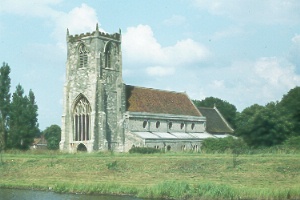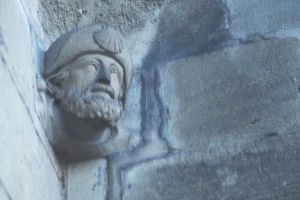

The earliest mention of Skirbeck, is in the Domesday Book:
In Schirebec hundred is a berewick of Drayton, of two carucates of land to be taxed. And in the same, nine carucates of land, and six oxgangs to be taxed. The soke is in Drayton. Land to eight Ploughs. Nineteen sokemen and thirteen villanes have there eight ploughs. The Earl himself has one plough in the demesne. There are two churches and two priests, and two fish-garths of ten shillings, and forty acres of meadow.
Berewick - A portion of the manor separate from the body,
a hamlet of a manor, or a small manor belonging to the lord of the
greater manor.
Carucate - As much land as a team of oxen could plough in a
season,
Oxgang - One eighth of a carucate of ploughland, the share
attributed to each ox in a team of eight (averaging about 13
acres).
Soke - The manor to which a place belongs or follows
(socan from the Latin sequi).
Sokeman - A freeman; one who holds his land of the king or
the lord of the soke. The Saxons called them lesser thanes and they
were later called yeomen.
Villane - A serf, free in relation to all but his lord, and
not absolutely a slave.
Demesne - A manor house with lands adjacent to it not let
out to tenants; any estate in land.
The parish church of Skirbeck is dedicated to St. Nicholas, patron saint of sailors (yes, also Santa Claus). The present building dates from the 12th century, and is the oldest church in Boston. It has, however, undergone a number of major changes in the last 900 years, so much so that it is difficult to imagine what the original structure would have looked like.
The tower is in the perpendicular Gothic style.In the 16th century, following a flood, the chancel was demolished and the East end of the nave was used for the purpose. Eventually, in 1935, a new chancel was built.




It has been suggested that some carved details at the West end of the church, including those pictured above, were made by men working on the building of the new chancel in 1935.
Page last updated 1 May 2002
If you have any comments on my pages, please contact me on
simonmeeds@yahoo.co.uk